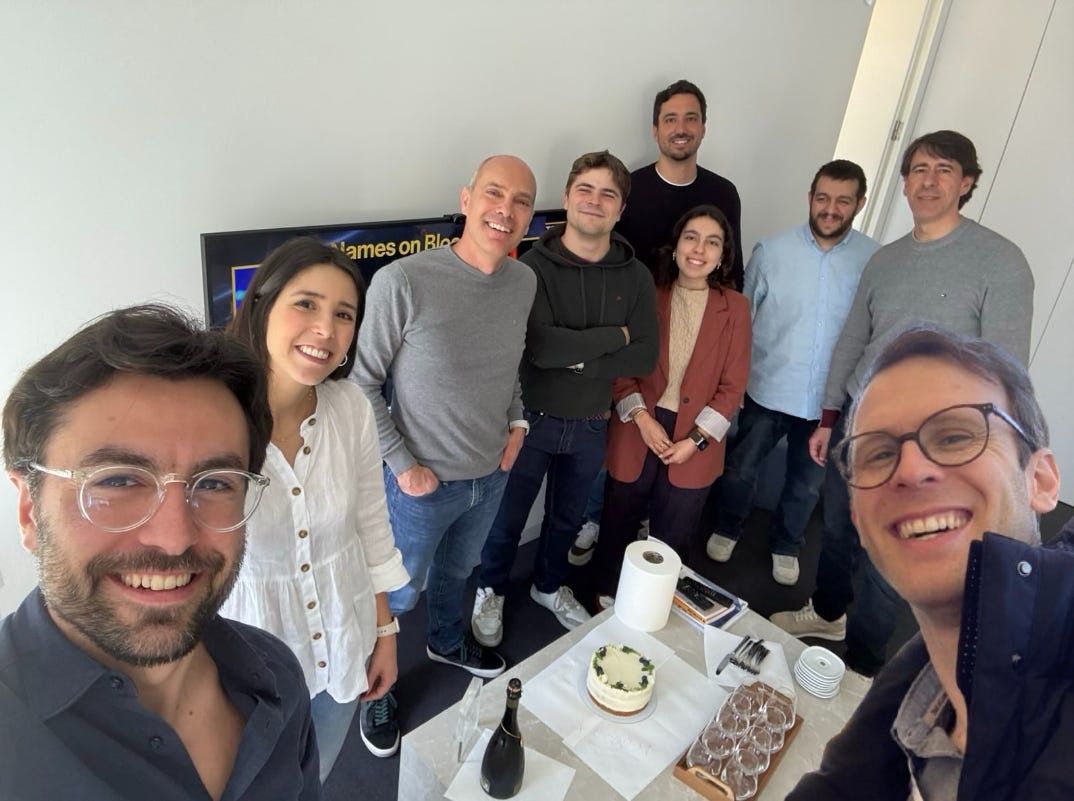Gauging the wave: How is enterprise adoption of agents progressing?
Insights from round-tables with AI&Data practitioners
Enterprises are feeling the pull of generative AI and agents—but few are confidently riding the wave. In our latest round-table with data and AI practitioners, we heard a familiar refrain: excitement tempered by the real-world friction of implementation. The dream of autonomous AI agents reshaping business processes is alive—but for now, it’s mostly a vision waiting for its moment.
Here’s where things stand, and where they’re headed.
📈 The Generative AI Maturity Curve
From basic “chat with a PDF” prototypes to sophisticated AI-first products, enterprises are moving at widely different speeds. Some are still kicking the tires. Others are laying foundations for agent-led transformations.
But across the board, adoption of AI agents remains nascent. Interest is high, experimentation is happening—but true deployment is rare. There’s a gap between POC and production, often driven by the unresolved tension between AI’s probabilistic nature and the deterministic demands of compliance and trust. For the very few that are leading adoption, they are likely to have to build their own stack internally.
⚙️ A Patchwork of Tools, Shaped by Maturity
AI adoption today is anything but monolithic. Enterprises are stitching together a mix of low-code platforms, vertical solutions, open-source models and enterprise-grade software to match the task at hand. The choice of tools isn’t just about functionality —it’s a reflection of where a company is on its AI journey and how mission-critical the use case is.
Vertical platforms are often used for retrieval-augmented generation (RAG) and chatbot enhancements, while deeper innovation—like reimagining a business model —leans on developer-first tools. This patchwork is intentional: AI tools are being matched to both the complexity of the task and the organization’s ability to absorb change.
🧠 It’s Not (Just) a Tech Problem
The blockers aren’t mostly technical. They’re human.
Resistance to change, fear of displacement and lack of trust in models’ outcomes are common hurdles. Even where technical capacity exists, many enterprises are wrestling with legacy systems and fragmented data environments. AI may be sexy, but the unglamorous work of data engineering and infrastructure readiness is still the prerequisite.
Enterprises are building multi-layered evaluation pipelines—automated testing, human-in-the-loop safeguards, and AI-based validation—to make probabilistic models feel deterministic. Integrating AI into existing SDLCs is no longer optional. It’s the only way to scale responsibly.
💸 Show Me the ROI - Enterprise vs Mid-martket
Economic caution is shaping AI adoption.
Budgets are tight, and the bar for “proof of value” is high. While consultancies and integrators are leading many enterprise AI efforts, a common complaint is that projects stall in the POC stage. The few that break through are often big-ticket, cost-saving deployments with a narrow focus on efficiency rather than innovation.
Case in point: a leading European sports commerce company estimated 1m€ real savings using AI to automate customs clearance in a few days of development —but scaling that success across the org is a different challenge. Another global FMCG leader is stuck in setting the right governance, despite clear top-line growth opportunities.
Startups are telling a different story. Without the weight of legacy systems—or legacy thinking—they’re moving fast. They’re embedding agents into user workflows, experimenting openly, and learning in real time. The difference? Alignment, agility, and a higher tolerance for risk.
🔮 Looking Ahead
The enterprise agent revolution isn’t coming tomorrow—but it’s coming.
Practitioners see the next 18–24 months as foundational. The focus now is on stabilizing data infrastructure, embedding governance, and laying the groundwork for agents to thrive. Cross-functional collaboration is emerging as a key success factor—tech, legal, ops, and product leaders must align to make AI adoption sustainable.
33N Company Updates 🚀
DataGalaxy
Recognized in the 2025 BARC Data Intelligence Platform Report 👉 Read more
Exein
Partners with Supermicro to secure their industry-leading hardware 👉 Read more
Partners with Integral Systems for France 👉 Read more
Partners with AAEON for industrial edge devices 👉 Read more
Panorays
Recognized as a Best Governance, Risk & Compliance (GRC) Product for 2025 by G2 👉 Read more
Releases 2025 CISO Survey on Third-Party Cyber Risk Priorities 👉 Read more
StrikeReady
Announced a collaboration with Outliers for Middle East and Africa's 👉 Read more
Participated and led an exclusive event at IntelliC0N 👉 Read more
Upcoming Events for 33N 🤝
RSA, 28Apr-1May, San Francisco – we’ll host a side event; reach out and join us!
SIM conference, 8-9May, Porto
Gartner Data & Analytics Summit, 12-14May, London
ECSO Startup Awards Finals, 21-22May, The Hague
Latitude59, 21-23May, Tallinn
OWASP Global Appsec, 26-30May, Barcelona
33N Connect Day, 29May, Porto
Infosecurity Europe, 3-5Jun, London
South Summit, 5-7Jun, Madrid
Team updates at 33N 👨💻👩💻🧑💻
Please join us welcoming 33N’s new members:
Ayman Hammoudeh as Venture Advisor, bringing experience as startup advisor and security practitioner, currently Field CISO at IBM in the Middle East
Flávio Carvalho as Advisory Board member, currently CISO Iberia at Crédit Agricole








